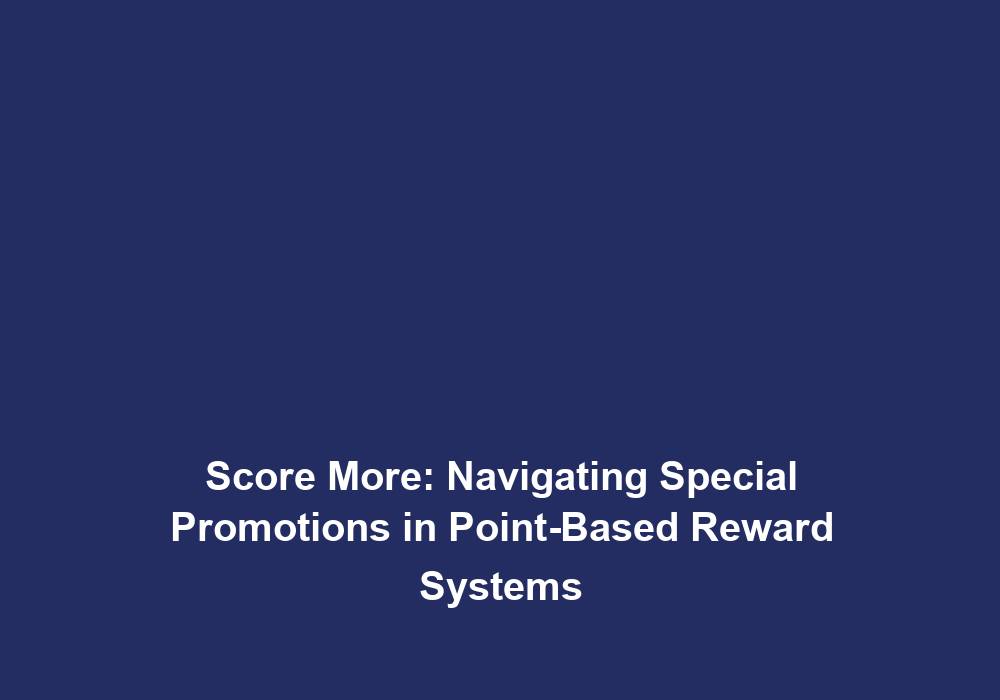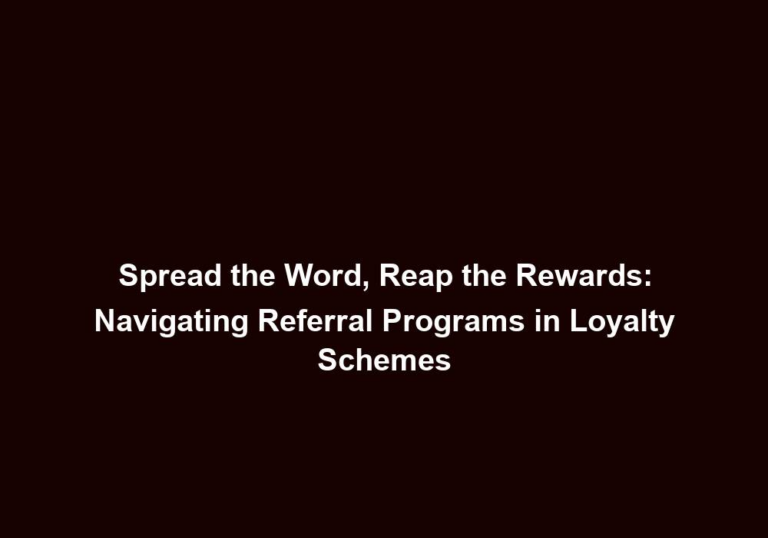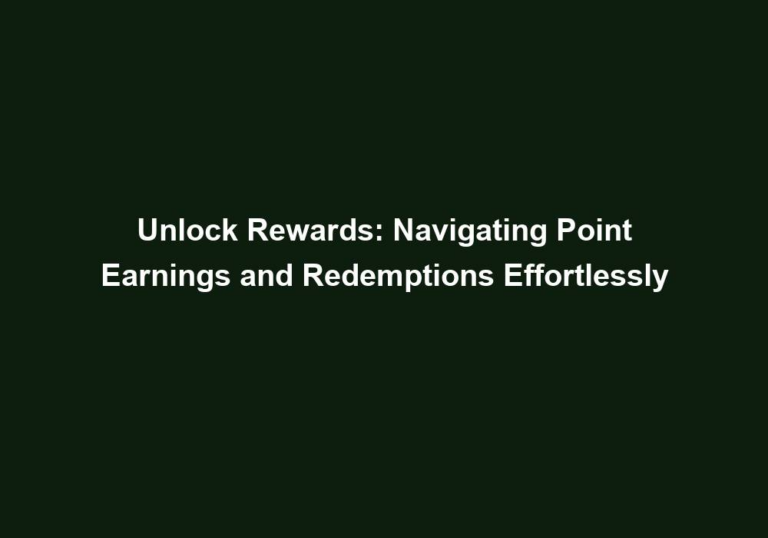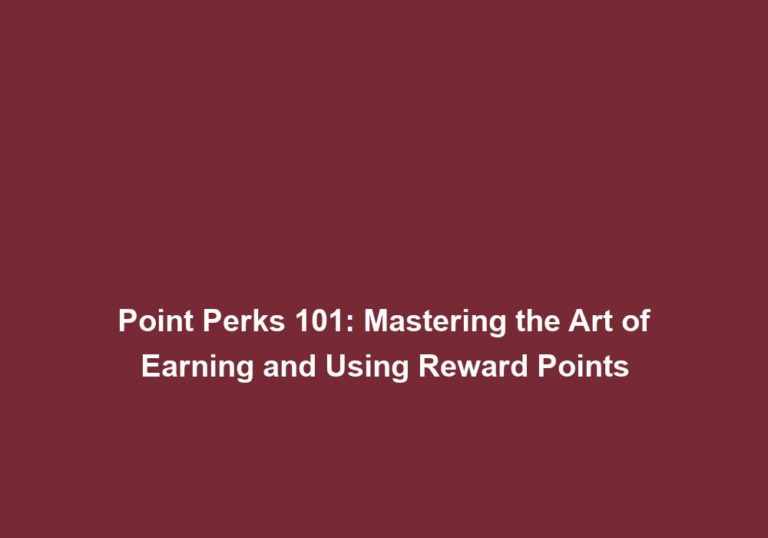Score More: Navigating Special Promotions in Point-Based Reward Systems
In today’s highly competitive market, businesses are constantly seeking innovative ways to attract and retain customers. One approach that has gained significant popularity is the implementation of point-based reward systems. These systems allow customers to earn points for their purchases, which can later be redeemed for various rewards. However, with the increasing prevalence of these programs, it is crucial for businesses to offer special promotions to stand out from the competition and keep customers engaged. In this article, we will explore effective strategies for navigating special promotions in point-based reward systems.
Understanding the Power of Special Promotions
Special promotions play a significant role in enticing customers to participate actively in point-based reward systems. By offering exclusive deals and incentives, businesses can motivate customers to earn and redeem points, creating a win-win situation for both parties. These promotions help businesses boost customer loyalty, increase sales, and differentiate themselves from competitors. Therefore, it is essential to understand the different types of special promotions that can be utilized effectively.
Types of Special Promotions
-
Points Multiplier: Offering a points multiplier promotion can significantly accelerate the rate at which customers earn points. Instead of earning just 1 point per dollar spent, customers could earn double or triple points during the promotion period. This encourages customers to make more frequent purchases, leading to increased engagement with the rewards program.
- Customers will be more motivated to spend more to accumulate points faster.
- Increased points earning rate leads to a sense of progress and accomplishment.
-
Bonus Points: Providing bonus points as part of a special promotion can be highly effective in motivating customers to engage with the reward system. Businesses can offer a fixed number of bonus points for specific actions or purchases. For instance, customers could receive 500 bonus points for their first purchase using the reward system or for referring a friend who signs up.
- Bonus points incentivize customers to take specific actions, such as making their first purchase or referring others.
- These promotions can be used strategically to encourage customers to try new products or services.
- Customers feel rewarded and appreciated for their loyalty and effort.
-
Tiered Rewards: Implementing a tiered rewards system where customers unlock additional benefits as they accumulate more points can be a powerful promotional strategy. For example, customers who reach a certain point threshold could unlock exclusive discounts, free shipping, or access to premium services. This encourages customers to continue earning points and strive for higher tiers.
- Tiered rewards provide a sense of exclusivity and achievement for customers.
- Customers are motivated to reach higher tiers for better benefits and privileges.
- This strategy promotes long-term engagement and loyalty.
-
Limited-Time Offers: Creating a sense of urgency through limited-time offers can drive immediate action. By offering exclusive rewards or discounts for a specific time frame, businesses can generate excitement and a fear of missing out (FOMO) among customers. This can be particularly effective for capturing spontaneous purchases and increasing customer engagement.
- Limited-time offers create a sense of urgency and scarcity, motivating customers to act quickly.
- Customers are more likely to make a purchase to take advantage of the exclusive rewards or discounts.
- This strategy can help boost sales during specific periods and create buzz around the rewards program.
Designing Effective Special Promotions
To maximize the impact of special promotions in point-based reward systems, businesses should consider the following strategies:
-
Know Your Audience: Understanding your target audience is crucial for designing promotions that resonate with their preferences and behaviors. Conduct market research, analyze customer data, and gather feedback to identify the types of promotions that would be most appealing to your customers.
- Determine the demographics, interests, and shopping habits of your target audience.
- Tailor your promotions to align with their preferences to increase engagement and response rates.
- Personalize offers based on customer data to create a more meaningful and relevant experience.
-
Align with Business Goals: Special promotions should align with your overall business objectives. Consider whether you want to focus on increasing sales, attracting new customers, or rewarding loyal customers. This will help you tailor your promotions to achieve specific goals.
- Align promotions with specific business objectives, such as driving sales during a slow period or attracting new customers.
- Set clear goals and metrics to measure the success of each promotion.
- Adjust promotional strategies based on the desired outcomes and business priorities.
-
Create Clear and Compelling Offers: Ensure that your special promotions are easy to understand and offer real value to customers. Clearly communicate the benefits and incentives of participating in the promotion, making it compelling enough for customers to take action.
- Clearly state the benefits and rewards customers will receive by participating in the promotion.
- Use persuasive language to highlight the value and savings customers can enjoy.
- Make it easy for customers to understand the steps they need to take to participate and reap the rewards.
-
Leverage Multiple Channels: Promote your special promotions across various marketing channels to reach a wider audience. Utilize email marketing, social media platforms, website banners, and in-store signage to effectively communicate your offers and engage customers.
- Use email marketing campaigns to reach existing customers and share exclusive promotions.
- Leverage the power of social media platforms to create buzz and share promotional content.
- Utilize website banners and in-store signage to capture the attention of customers at different touchpoints.
-
Monitor and Measure Results: Regularly monitor and measure the performance of your special promotions to evaluate their effectiveness. Analyze metrics such as customer engagement, sales, and redemption rates to assess the impact of your promotions and make necessary adjustments.
- Track key performance indicators (KPIs) to measure the success of each promotion.
- Analyze customer engagement metrics, such as click-through rates and conversion rates.
- Monitor redemption rates to understand the effectiveness of the rewards program and promotions.
Conclusion
Special promotions are a valuable tool for businesses operating point-based reward systems. By offering enticing incentives, businesses can encourage customer participation, boost loyalty, and drive sales. By understanding the different types of special promotions and implementing effective strategies, businesses can navigate and maximize the benefits of point-based reward systems. Remember to continuously analyze and adapt your promotions based on customer preferences and market trends to ensure long-term success.





